While I have come up with some concept art drawings that show what I want environments to look like, some feedback I have had is that drawings of level designs would be helpful and necessary for the Levels page of my GDD. As a result I looked back on the games I have taken inspiration from as well as some additional sources that closely resemble the kinds of levels I want for Kinetic Panic.
Marble Blast Ultra
In my review of Marble Blast Ultra I made note of how much I enjoyed the level design. The levels ranged from small to very large but the main factor was how much room for improvement in terms of traversal skill and routing they offered. For example, even a tiny level like the “Cubed” level shown in the review has one intended easy route where the player takes multiple elevators and gravity powerups to get to the end. However, most of this can be skipped in a few skillful jumps for players who have grown more confident with the game’s controls and physics, and usually this is totally intended by the developers.

In Kinetic Panic I want this intentionally open-ended design to be core to the level design, allowing for several intended paths to goals. I also want some faster paths to be rather tricky, rewarding players who have taken the time to hone their skills. This would make possible time-based objectives feel more rewarding but this may go against the game’s core ethos.
With the aforementioned changes in scale Marble Blast Ultra also has a great deal of variety in its levels, keeping player experience fresh and encouraging continuation to the next level. These also let the player experiment and learn the intricacies of the controls as level features can vary between large slopes and slides to floating platforms, bouncy surfaces and more.
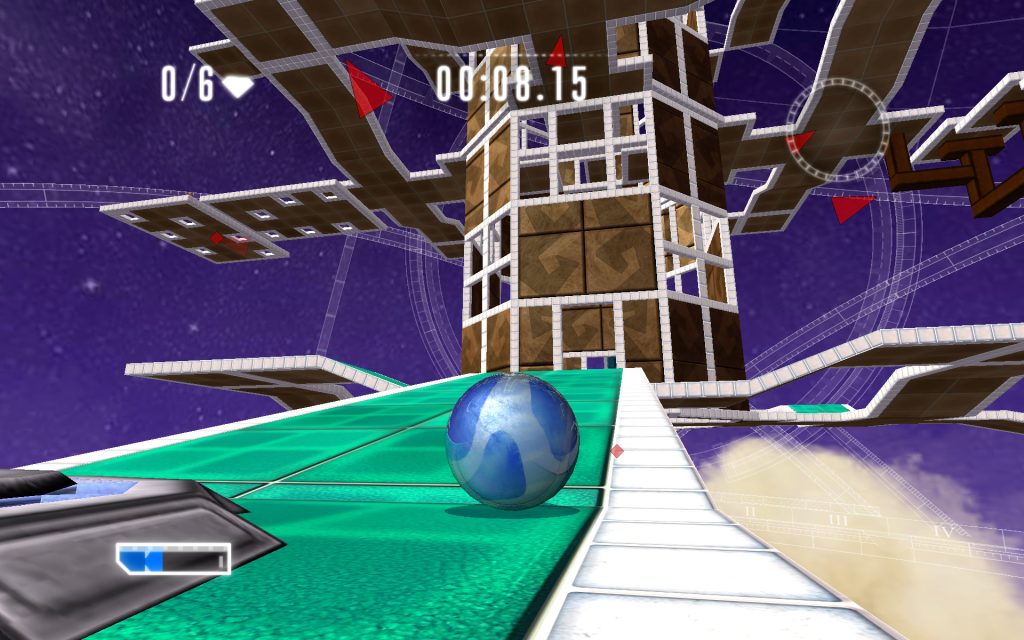
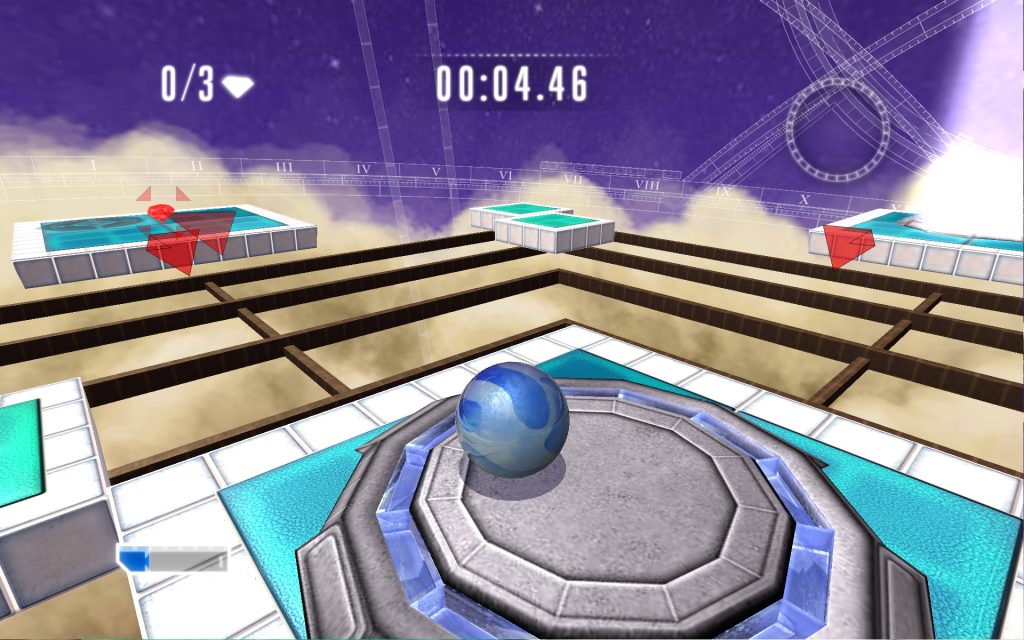
In my own game I want all the levels to be rather expansive as they will not be entirely linear like Marble Blast‘s, but this idea of variation is vital as I want different paths through the level to utilise different ablities and skill sets of players. However, I do not want the movement to require extremely precise movement like in Marble Blast as the game should be fun and accessible for all.
Super Mario 64
My initial plan for my game was to have somewhat linear levels with a single goal similar to Marble Blast, but as I fleshed out my game’s essential experience of having levels be replayable, I realised that the simple task of improving one’s fastest time was somewhat antithetical to the puzzle-like exploratory nature of the gameplay. In order to stoke players’ curiosity and imagination when playing with the mechanics I decided to have multiple goals per level, and my immediate source of inspiration was the game that popularised this layout, Super Mario 64 (1996).
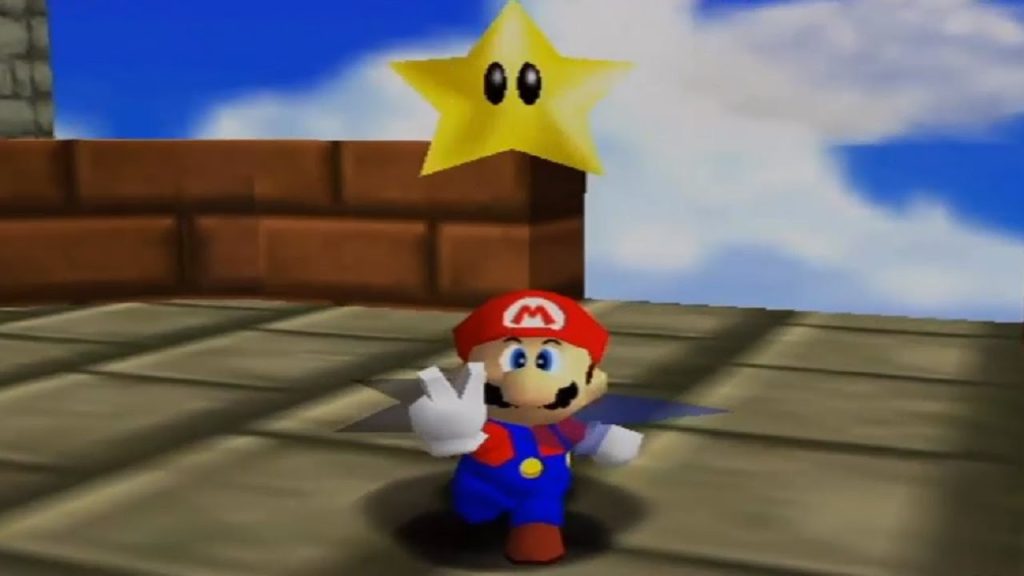
In the game, the goals take the form of stars that can be found around the map by reaching new areas, usually via platforming like wall-jumping up a passage, or firing yourself out of a cannon to the top of a mountain.
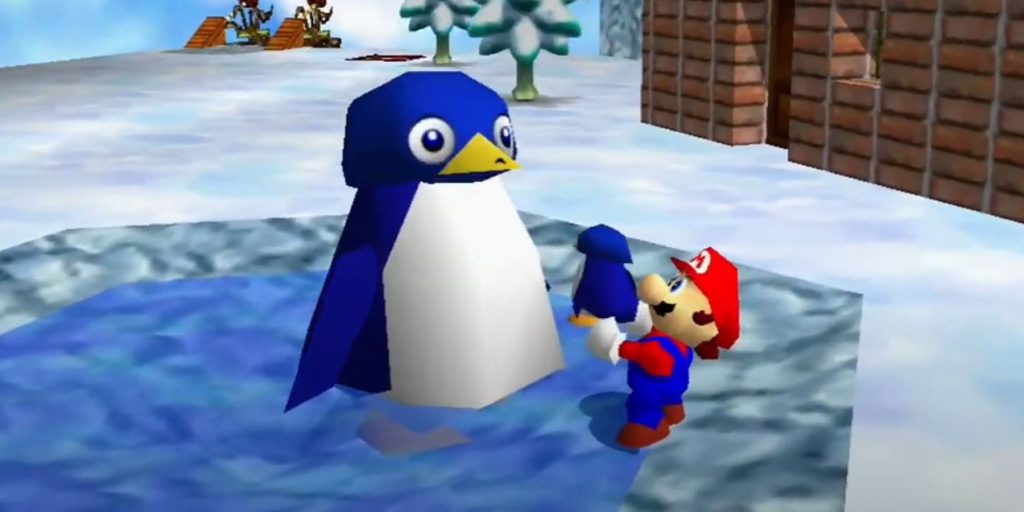
There are also stars awarded for collectibles, races, and transporting objects, but to keep an achievable scope for levels in Kinetic Panic I will mainly include these collectable goals for platforming objectives, rewarding curiousness when exploring the level and reaching new areas.
Developing Level Concepts
A good idea I was given when presenting my work in progress game concepts was to initially create level designs, or at least small subsections of platforming challenges within a level, in 2D, by drawing them. This would be an easy way to illustrate how platforming puzzles and challenges would be designed as well as what the variety of general level layouts would be in the main game.
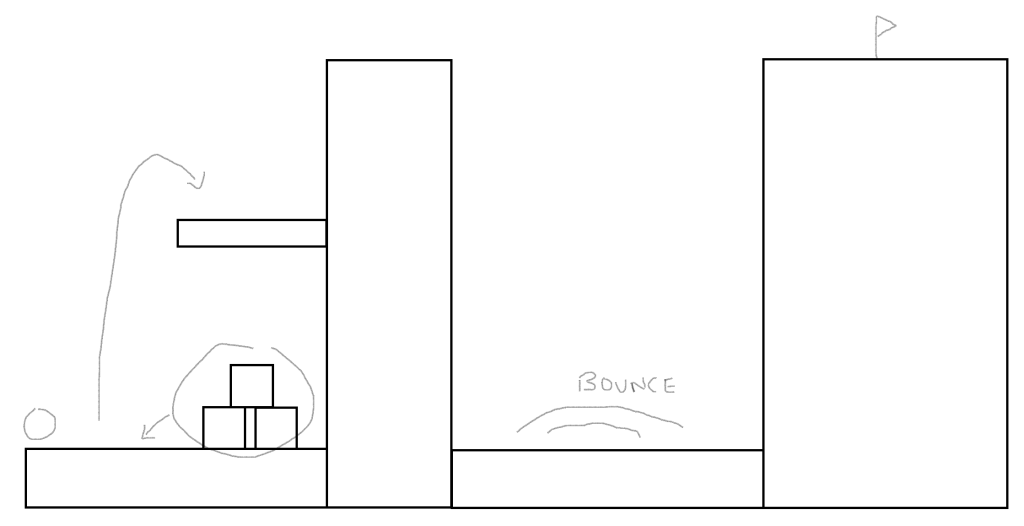
This initial sketch shows the player on the left and the goal, the energy cluster, on the right. To get up to the first tower the player must use the objects on the ground using their abilities, perhaps by putting them in zero gravity, or possessing and moving a box. They then must use their Elasticity ability to make the floor at the bottom of the pit bouncy, so they can bounce to the platform with the goal. This was an extremely simple example but gave me ideas for new, more complex platforming challenges that would properly test the player’s creativity.
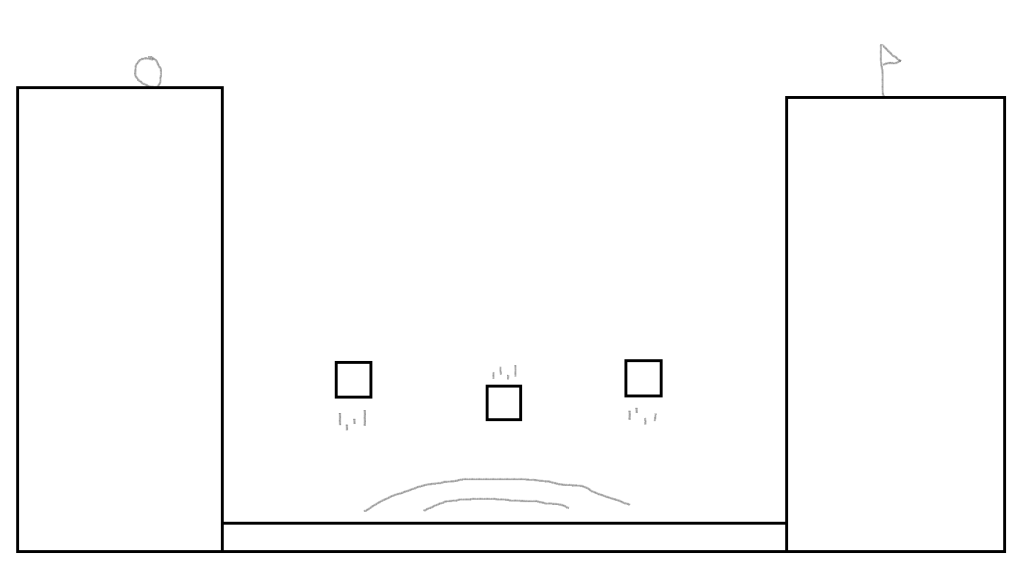
The sketch above shows three objects bouncing on a surface that already has a high Elasticity by default. They usually do not bounce high enough for the player to use them to platform, however the player should be able to land and stay on them easily. However, if the player sets the Gravity to be low as the objects bounce upwards, or perhaps gives the objects a strong downwards velocity into the bouncy floor, they will be able to get high enough to jump up to the platform at the end with the goal.
This worked much better as a simple platforming task that could lead itself to multiple solutions, and would be perfect for my GDD along with similar designs.

Here is an even simpler platforming puzzle with multiple solutions I sketched up. For example, to cross this pit the player could use the Gravity ability to set the gravity to zero next to the opposite platform, then move the objects to that area to create a way to get up. Or they could set the Friction of the opposite wall to very high, making it sticky, and then throw objects at it using the Velocity ability to create a staircase.
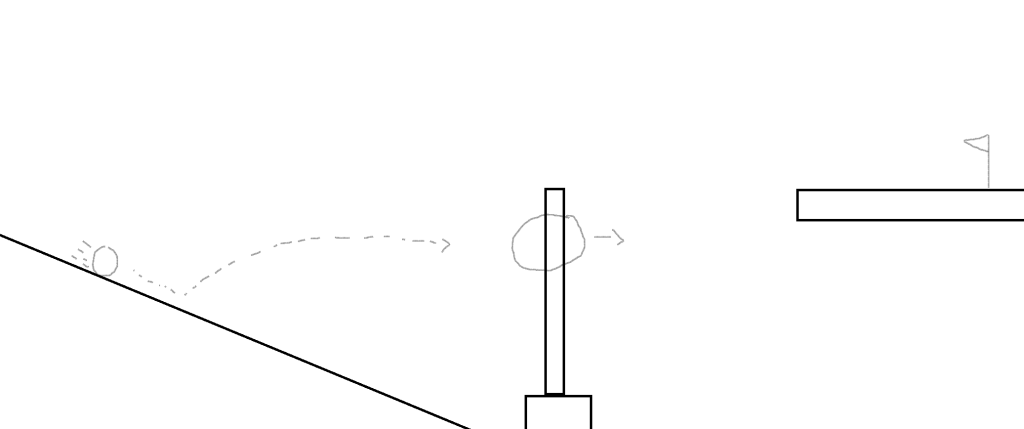
This sketch is similar, but essentially describes the player building up speed and momentum on a slope, then toppling over a large, heavy object to jump on and use as a ramp mid-air to get to higher areas.
These are all likely ideas that would have to be playtested and refined but I think they serve as interesting ideas that can inspire the team working on my game to come up with unique platforming challenges within the level.

Leave a Reply